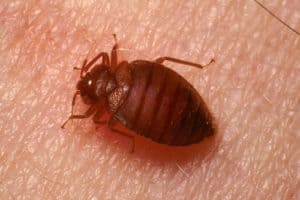Being able to work with various pests infestation cases, I know how challenging it might be to find any kind of insects in your house and get rid of them once and forever. The most complicated task is eliminating bloodsucking pests such as bed bugs — highly unpleasant and annoying vermins that are hard to get rid of.
To clean your house from pests, it is important to identify them properly. Sometimes, you might think that you have bed bugs when you actually don’t, so your pest-fighting methods won’t work as they should.
To help you identify and effectively fight pests, I have written this guide with a detailed observation of what other bugs look like bed bugs, their characteristics, and habitat.
Bugs That Look Like Bed Bugs: Detailed Review of the Most Popular Insects
There are plenty of various in-house pests you might get into your household and produce serious problems. Bed bugs are the ones that are so small and similar to other pests, it is really hard to know for sure which type of bug you have faced. Let’s look through the key features of bed bugs appearance and life cycle, and proceed to their pest relatives.
What Are Bed Bugs And How Do They Look
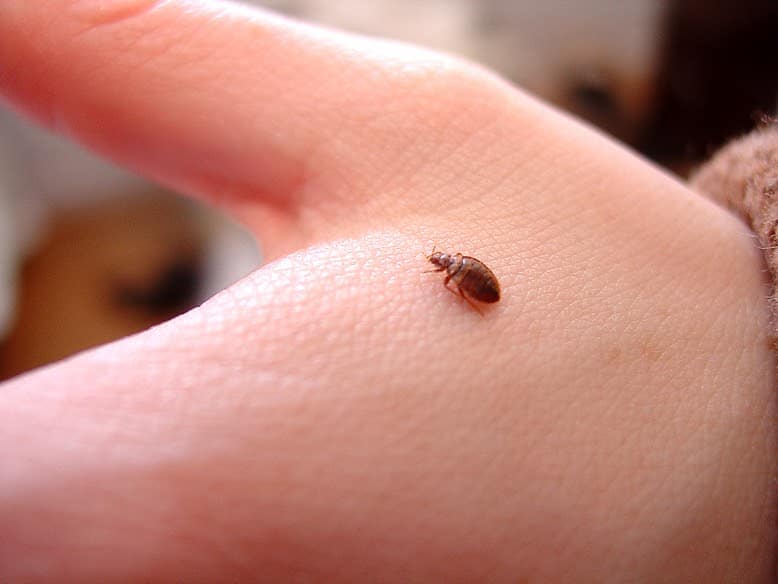
Identifying what do bed bugs look like, it is important to take into account all possible features. These insects are tiny in size, ranging from 2 to 5 millimeters depending on their life cycle period, with transparent skin color at a young age that gets rust color when they reach adolescence.
When the newborn bed bug has just had a blood meal, he turns from pale to bright red due to the small bed bug size, nearly the only moment you can see it – when the bug is feeding on your skin.
Many people ask me: “do bed bugs fly” and “do bed bugs have wings.” In case you have seen a pest that flies, that is not a bed bug. These tiny insects have no wings and cannot fly, although adult bugs have wing vestiges or wing pads – underdeveloped signs of wings that cannot be used for flying. They are also able to move fast on the furniture, floors, and walls, settling literally everywhere in the house.
Finding a bite is the first sign of pests infestation, and bed bugs can bite you anywhere, focusing on those body parts that are denuded while sleeping: face, neck, feet, hands, or shoulders. While you won’t feel the bite itself, after being bitten your skin might feel itchy or inflamed.
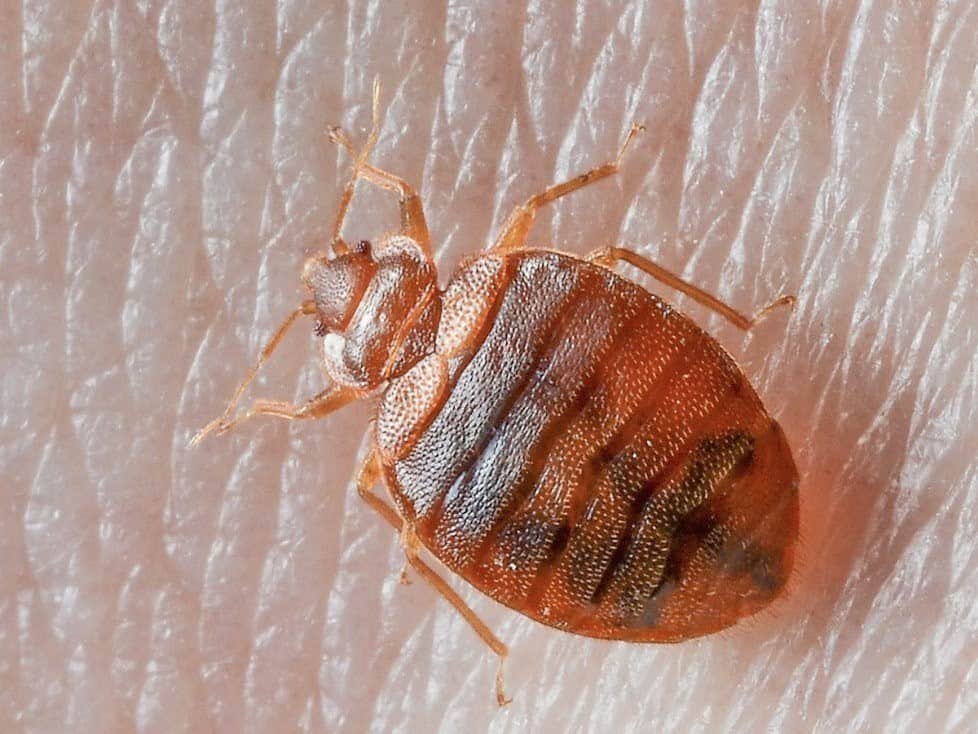
Bed bugs can be identified by their appearance: they have an oval-shaped flat body that gets more elongated after the meal. They have six legs and two tiny antennas that make it possible to distinguish bed bugs from arachnids or mature mites.
Before asking how to get rid of bed bugs, it is essential to identify the type of insect you have faced. To properly identify bed bugs, I highly recommend you to look through the bed bug pictures that reveal all the details of their typical appearance.
What Are Other Tiny Bugs in Bed That Are Not Bed Bugs
- Bat bugs
- Baby roaches
- Ticks
- Fleas
- Booklice
- Carpet beetles
- Spider beetles

Although you might think you have bed bugs, this is not always true. There is a series of bugs mistaken for bed bugs that are usually misidentified because of similar appearance, bites, or spreading specifications.
To properly identify the type of vermins that invaded your house, let’s look through the list of such pests, opposing bed bugs vs other bugs, defining their typical features, appearance, bites, and habitat.
Bat Bugs vs Bed Bugs
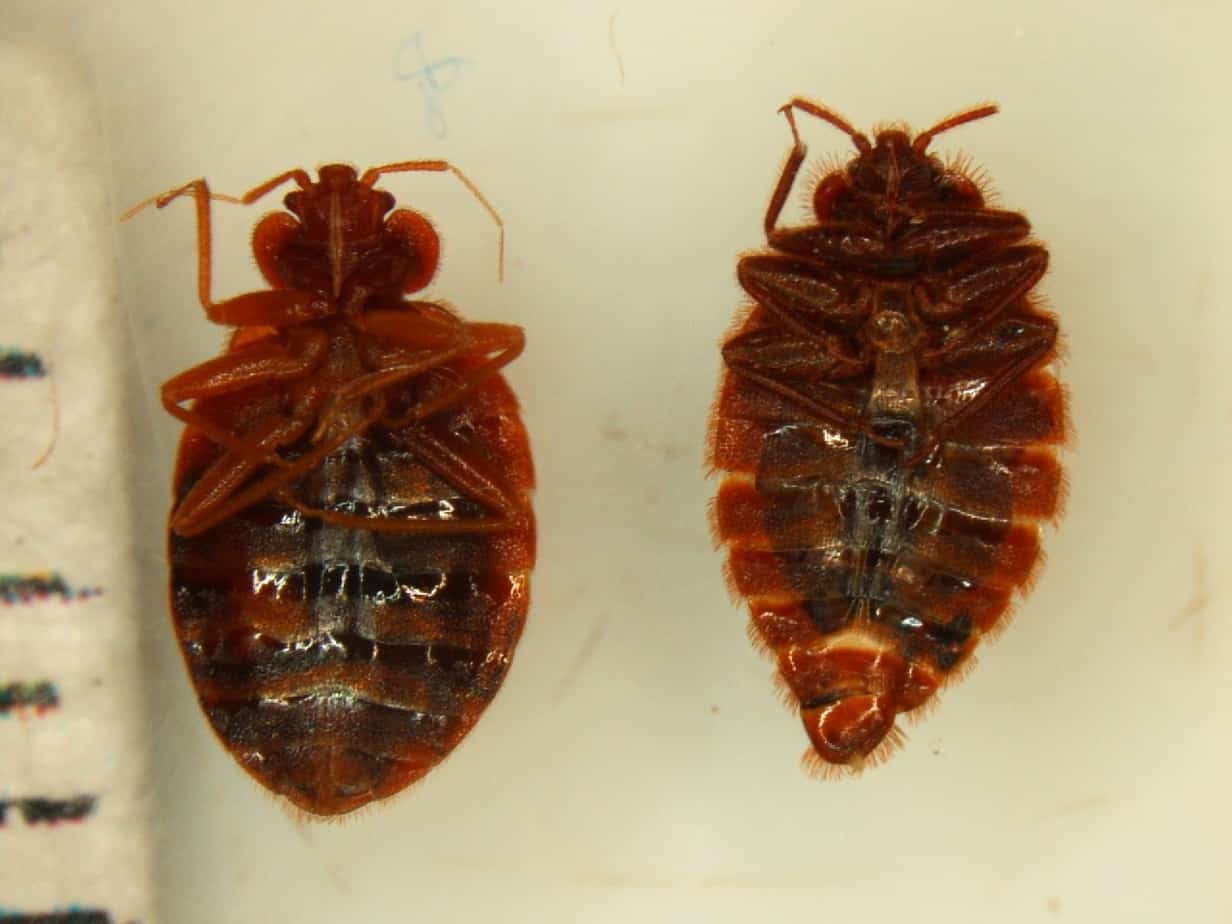
Bat bugs are the most similar pests to bed bugs in their appearance – it is impossible to clearly identify whether the insect is a bat bug without a microscope: their only difference is the length of fringe hairs located near the bugs’ head.
However, bat bugs aren’t usually in-house pests as they feed on bat’s blood and reside in the places of bat’s colonies that might be situated inside a house: in chimneys, attics, or plumbing.
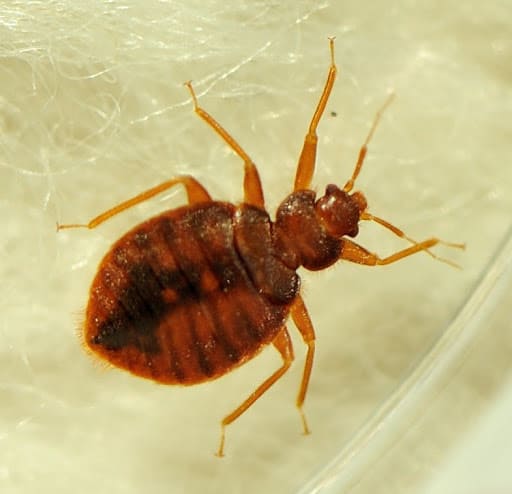
Trying to oppose bat bugs vs bed bugs, it is possible to see the difference in the skin color: bat bugs can have beige or light brown skin color, while bed bugs have more reddish skin.
Both insects have an oval-shaped body with non-developed wing pads and cannot fly. Bat bugs are usually found in the Midwestern US, while bed bugs are distributed worldwide.
[su_note note_color=”#e5e2d4″]Related post: Best Bed Bug Steamers [/su_note]
Baby Roaches vs Bed Bugs
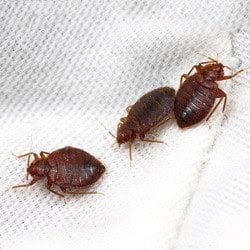
Small baby roaches are usually misidentified as bed bugs because of their similar appearance and behavior. However, unlike blood-sucking insects, baby roaches are white just after hatching, but get reddish shortly after that, becoming quite similar to bed bugs. Their nighttime activity peaks are also similar to the bed bugs’ behavior.
The main difference that comes out while opposing baby roaches vs bed bugs is that baby roaches does not bite people. They try to hide in cracks and dark, tight spaces, staying close to the warmth, food, and moisture. Baby roaches are almost twice smaller and have a cylindrically-shaped body, while bed bugs are oval-shaped.
Baby roaches are also highly unpleasant pests that are hard to get rid of. It gets easier to identify them as they grow and molt, so be sure you have properly identified the pest type and take quick measures for its elimination.
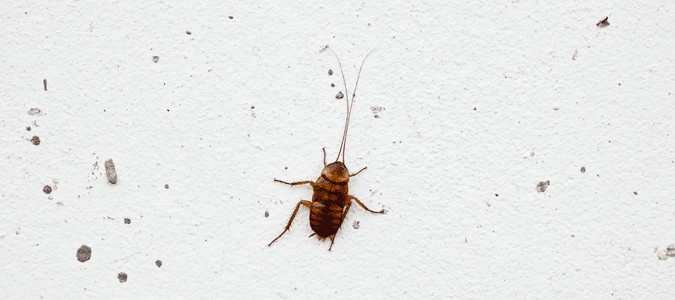
Ticks vs Bed Bugs
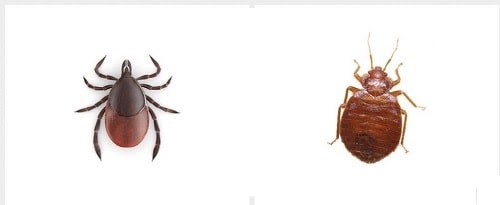
Being misidentified as bed bugs, ticks, in fact, have a few similarities with these pests: both have a flat, brown body and can feed on human blood. Thus, it is important to not only know what do ticks look like but how they are different from other insects.
Ticks are as small as bed bugs and have no wings, so they also can’t fly. Their bites are almost unfelt and can be found nearly anywhere on your body.
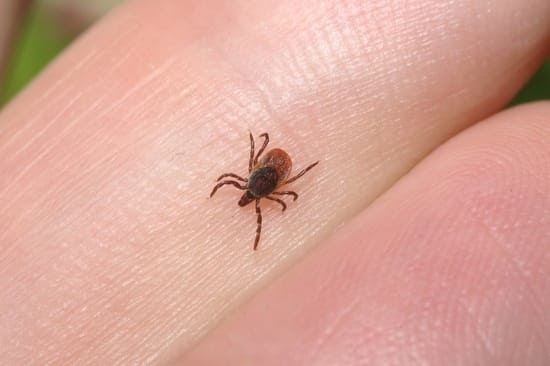
When talking about differences of ticks vs bed bugs, it is necessary to say that ticks are arachnids and have eight legs, while the bed pests are insects and thus have only six legs. While the latter are in-house pests, ticks are usually found outdoors, hiding in high grass or on the leaves of trees and bushes. Ticks are usually feeding on animals’ blood, although they can bite humans.
Ticks’ bites might be dangerous, as they can carry such diseases as Lyme disease, Rocky Mountain spotted fever, ehrlichiosis, and others. While bed bugs can bite you up to 10 times and then move to other locations, ticks bite you once, getting under your skin, and can stay there for several days until they are fully saturated.
They usually choose the body parts with hair or creases, such as armpits, legs, neck, or waistline. It is hard to remove a tick from your body, and it is important to be careful and not to leave the ticks’ head under the skin.
Fleas vs Bed Bugs
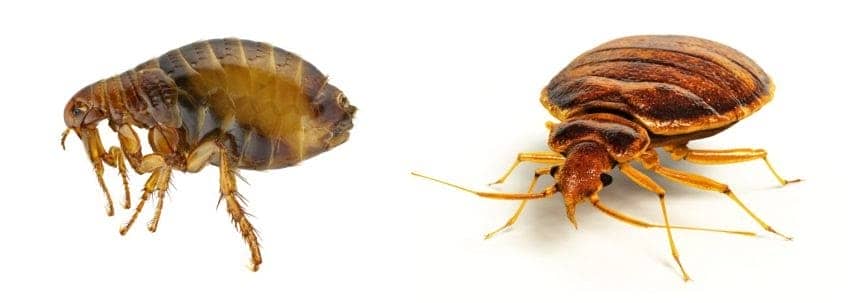
In case you have spotted bites on your skin that might be itchy, the first two reasons might be bed bugs and fleas. Being small and quickly moving pests, fleas also create a lot of discomforts, leaving numerous bites on the human body that look and feel distressful. Both fleas and bed bugs have brown-reddish skin and don’t have wings.
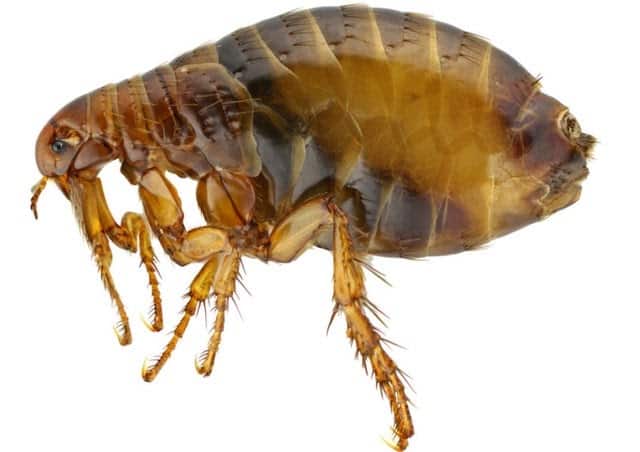
When putting fleas vs bed bugs, it is possible to see that their appearance is different: while bed bugs have horizontally-flat bodies, fleas are vertically-flat. Both insects have six legs, fleas have longer legs and can jump up to 18 centimeters high.
While bed-found pests prefer to feed on human blood, fleas usually bite furry animals, such as cats and dogs and live mostly outside. Flea bites aches immediately, while most people don’t feel the bites of bed bugs and can discover them only on the next morning.
The flea bites are usually situated on the lover parts of the body, while bed pests can bite you anywhere, focusing on those body parts that are exposed during your sleep.
Booklice vs Bed Bugs
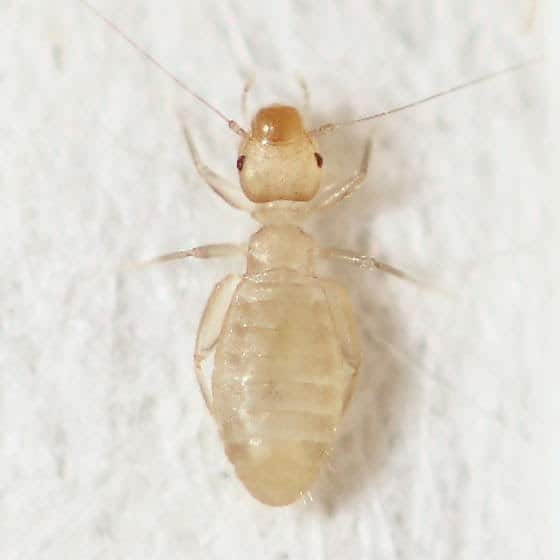
Thanks to their size and color, booklice are mistaken for bed bugs as well, especially their nymphs: they are smaller in size and have a pale brown or creamy skin color. Booklice also has two antennas, but they are more similar to termites and have a segmented body (the head is separated from the rest of the body).
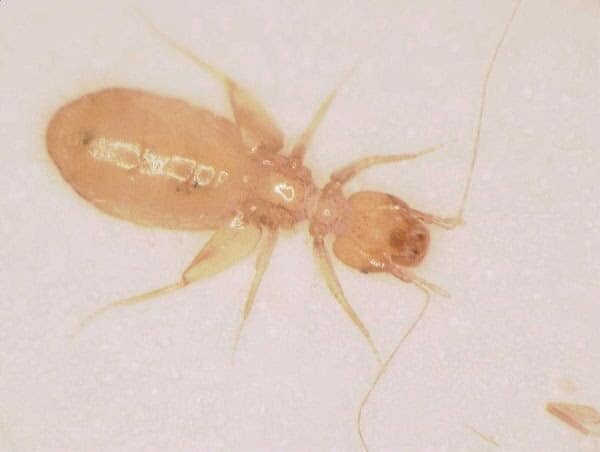
Although both insects live inside the house, booklice don’t bite people and feed on mold and fungi. They can be found in places with high humidity: under wallpapers, near the windows, damp books, or in the stored food.
Confronting booklice vs bed bugs, it can be seen that booklice is smaller and has a different appearance and living habits due to quick dehydration.
[su_note note_color=”#e5e2d4″]Related post: Best Bed Bug Sprays Reviewed [/su_note]
Carpet Beetles vs Bed Bugs
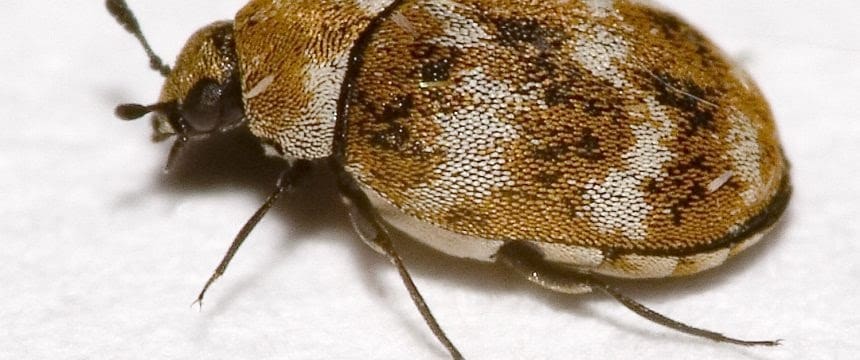
Carpet beetles are one of the bed bugs look-alikes that are usually misidentified because of their size and similar appearance. Carpet beetles have black skin with a white pattern and bright scales that might be orange, red, or reddish-colored. They are smaller than bed bugs, have an oval-shaped flat body with hair on it, and two small antennae.
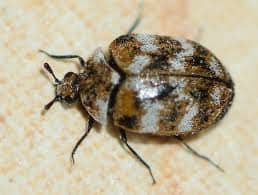
There are numerous differences when opposing carpet beetles vs bed bugs, and the most important is that carpet beetles aren’t blood-feeders: they prefer flowers’ nectar and pollen, thus, they usually live on flowers and can get inside the house with the fresh bouquet.
Unlike bed bugs, carpet beetles can fly, and when getting inside the house they adapt their diet, switching to natural fabrics. Carpet beetles aren’t dangerous and don’t bite people, but the direct connection with the beatles with exposed body parts might lead to allergy.
Carpet beetles are still unpleasant house pests that might destroy carpets, clothes, and all fabrics, getting into the bed and other furniture.
Spider Beetles vs Bed Bugs
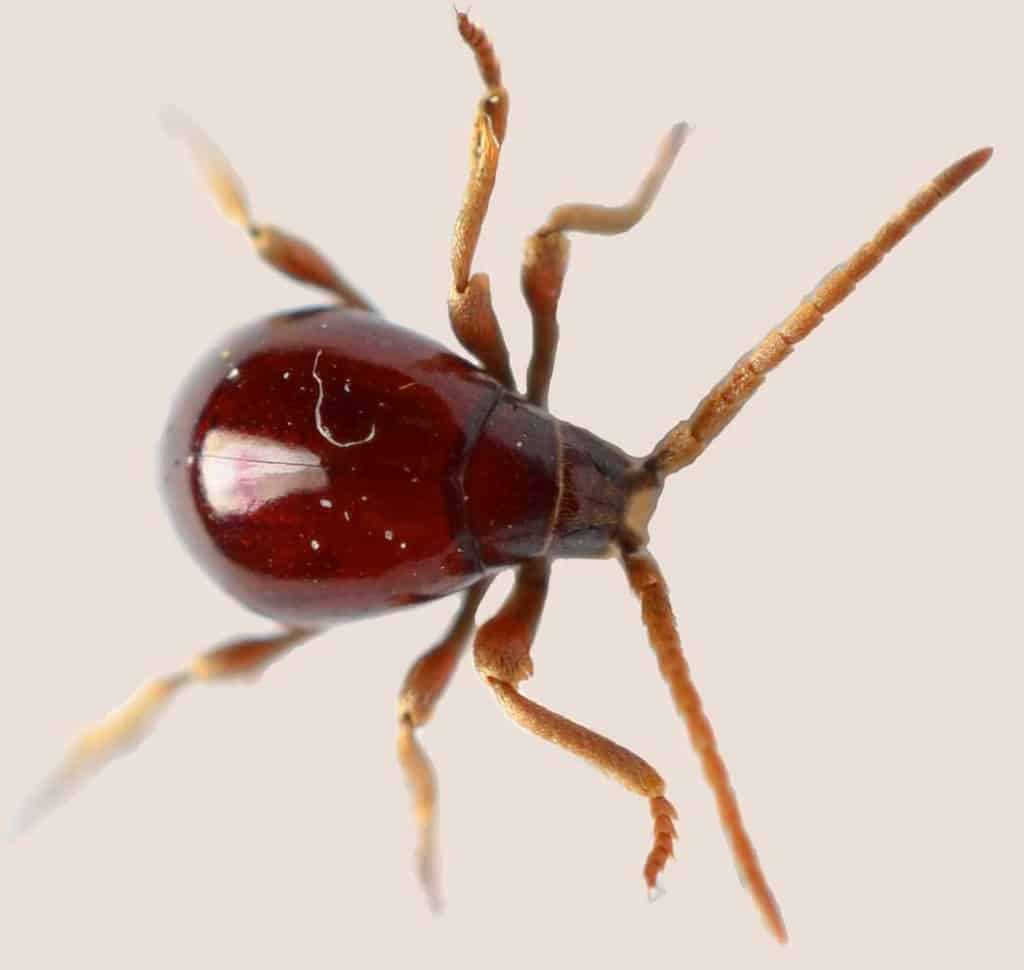
One of the vermin types that can be regarded as bed bugs is spider beetles. These pests also have an oval-shaped body that has brownish color – features that are also typical for their bed-located relatives. They are slightly smaller – from 1 to 5 millimeters, depending on their type and lifecycle stage.
They have six legs and two antennae that are usually regarded as an additional pair of legs. This makes them look similar to spiders, although they are usually misidentified for bed bugs because they look very similar to the above.
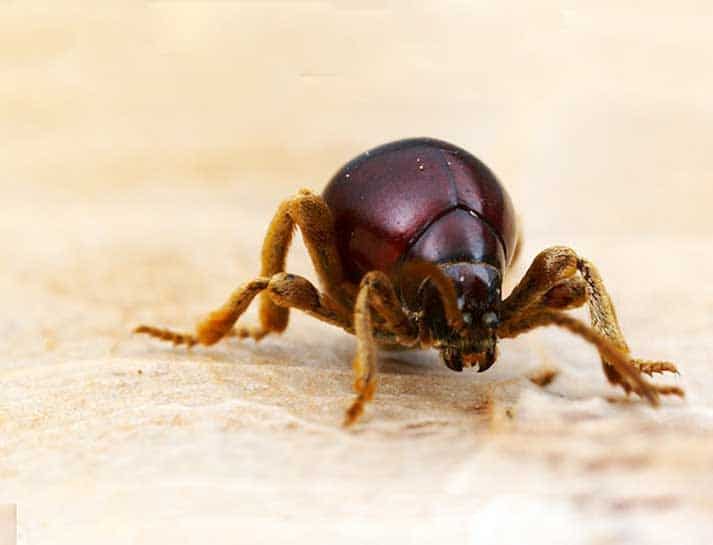
Spider beetles are foragers and aren’t considered as extremely dangerous pests but given the right conditions and free access to food, they can develop into numerous pests colonies that might create serious problems for restaurants, hotels, food stores or hospitals.
Spider beetles are usually active at night – the same time as bed bugs, and can be found inside walls or in the cracks or on the plants.
Confronting spider beetles vs bed bugs, it can be seen that these insects are less disturbing, they don’t bite people or animals and prefer to live near the food or moisture, hiding from humans.
[su_note note_color=”#e5e2d4″]Related post:
- Best Bed Bug Heaters Reviewed
- Comprehensive Hot Shot Bed Bug Fogger Review
- Best Bed Bug Encasements
- Best Bed Bug Fogger
- Essential Oils for Bed Bugs
- Bed Bug Poop Pictures
[/su_note]
Getting to Know Your Enemy: Bugs That Look Like Bed Bugs
To effectively eliminate bed bugs or any other pests from your house, it is important to know your enemy, its habits, weak sides and habitat. To help you identify the type of bug you have faced and what do bed bugs look like, I have created a detailed review of the bed bugs and bugs that look similar to bed bugs, highlighting their main characteristics and key differences that might help you define the type of insect that has invaded your house.
To clean your house from any type of parasite, it is essential to properly identify them and their location, know their habits and food preferences. Each type of pest has its typical features that can be defined even without a specialist. To help you identify the most widespread types of vermins, I have collected their characteristics in this post.
In case you have faced other types of insects that look like bed bugs, please, share the name of the bug or a photo in the comments. Where did you spot it? How the pests behaved? I am also interested in your success stories of effective pests identification and elimination!
References:
- Bed Bugs Appearance and Life Cycle (United States Environmental Protection Agency):
https://swap.stanford.edu/20151016075053/https://www2.epa.gov/bedbugs/bed-bugs-appearance-and-life-cycle - What Do Ticks Look Like? (College of Agriculture and Life Sciences):
https://nysipm.cornell.edu/whats-bugging-you/ticks/what-do-ticks-look/

